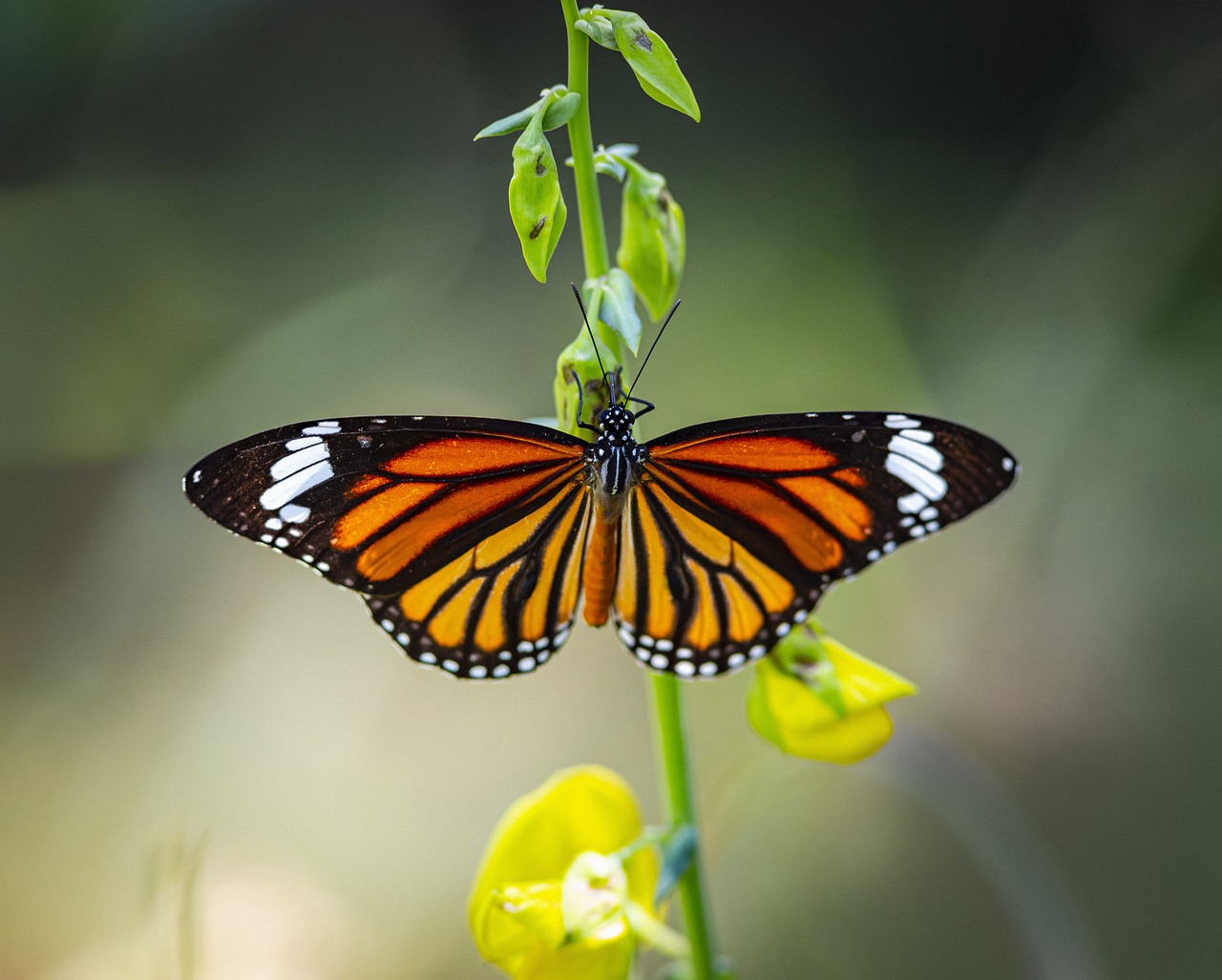The Common Tiger (Danaus genutia), also known as the Striped Tiger, is a medium-sized butterfly found throughout Asia and is part of the milkweed butterfly family, closely related to the well-known Monarch butterfly. This species is admired for its vivid coloration and graceful flight.
Appearance
- Wingspan: Typically ranges from 70 to 95 millimeters.
- Coloration:
- Upperside: Bright orange with broad black borders and distinct white spots on the forewings. The veins are marked with black, giving it a striking “tiger-like” pattern.
- Underside: Paler, with a similar pattern but less vibrant. The hindwings display faint white spots within the black borders.
- Sexual Dimorphism: Males have specialized scent glands (androconial patches) on their hindwings, which are absent in females.
Habitat
- Distribution: Widespread throughout South and Southeast Asia, extending to parts of Australia. Common in tropical and subtropical regions.
- Preferred Habitats: Found in a range of habitats, including open forests, gardens, grasslands, scrublands, and urban areas. They favor areas with plenty of flowering plants and milkweed, the larval food plant.
Behavior
- Feeding: Adults primarily feed on nectar from a variety of flowers, such as Lantana, milkweed, and Ageratum. The butterfly is often seen hovering around these flowers in gardens and meadows.
- Flight Pattern: Exhibits a slow, gliding flight with characteristic pauses, often flying close to the ground.
- Mimicry: This butterfly is part of a complex mimicry system. It is distasteful to predators due to the toxins it acquires from feeding on toxic milkweed plants as a caterpillar. Its bright coloration serves as a warning to potential predators.
Life Cycle
- Egg: The female lays eggs singly on the undersides of milkweed leaves.
- Larva (Caterpillar): The caterpillars are black with white and yellow bands, and they feed exclusively on milkweed plants, accumulating toxins that make them unpalatable to predators.
- Pupa (Chrysalis): The chrysalis is a smooth, jade green with golden spots, often attached to a hidden part of the milkweed plant or nearby vegetation.
- Adult: Emerges after a couple of weeks, ready to feed and reproduce.
Ecological Importance
- Pollination: As nectar feeders, they help pollinate many flowering plants, contributing to biodiversity in their ecosystems.
- Prey and Predator Dynamics: While toxic to many predators, some birds and insects have developed resistance, creating a dynamic balance in local food webs.
Conservation Status
- Common and Widespread: The Common Tiger is not currently considered threatened and is abundant throughout much of its range. However, like other butterfly species, it can be affected by habitat loss, pesticide use, and climate change.
The Common Tiger (Danaus genutia) is a remarkable butterfly known for its beauty, resilience, and role in ecosystems as both a pollinator and a participant in mimicry systems. Its presence in gardens and natural habitats is a testament to its adaptability and ecological importance.
Visited 194 times, 26 visit(s) today
Views: 356
Subscribe to the newsletter:
